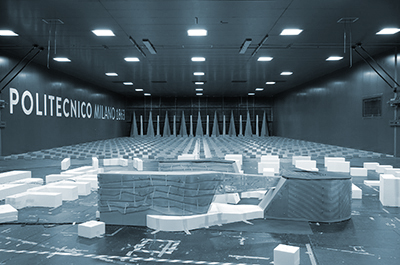
The Double Skin Porous Façade (DSPF) technology has a new prestigious example in the new building of the ENI headquarters in San Donato Milanese, by Thom Mayne and Morphosis Architects.
The research project, focused on the evaluation of the effects of the wind on a permeable double skin façade, was developed by the Wind Tunnel of the Politecnico di Milano (GVPM) and by the MeccPolimi Wind Engineering group, with the coordination of Prof. Alberto Zasso and with the contribution of Giulia Pomaranzi, PhD student. After a master's thesis on DSPF technology for Bocconi Campus buildings, Giulia is completing her PhD with a thesis in the field of wind-induced loads on the facades of buildings.
The main aim of this project was the façade wind load estimation and the investigation of the potential aero-acoustic noise emission of the permeable layer of the cladding.
“The façades play an important role in the reduction of the system energy demand by significantly decreasing solar radiation and increasing the inhabitant living comfort” – says prof. Zasso (responsible of the research project) – “The adoption of such façade ensures, on one hand, the energy saving but on the other raises question about wind interaction: the presence of the outer layer and its interaction with building aerodynamics may induce modifications to the inner façade loading condition and wind strong effects are expected on the external mesh”.
The study was conducted in the Politecnico di Milano Wind Tunnel, adopting a methodology based both on experimental tests and numerical simulations to define the wind loading condition. Wind tunnel tests on 1:75 rigid scaled model of the buildings have been performed considering the wind characteristics at the construction site. A complementary role has been played by the Computational Fluid Dynamic model that, together with the wind tunnel tests, has led to the definition of the wind-induced pressure load on both skins and the computation of the velocity flow field around such buildings. The potential emission of wind-induced noise has been adequately addressed through ad hoc tests performed in the Pininfarina wind tunnel (a structure specifically designed to deal with aeroacoustics problems) where it was possible to locate the sources of noise of the single portion of the building, with special noise technique (beamforming).
The building is currently under construction and will be finished by the end of 2020. Here more info about a project.
